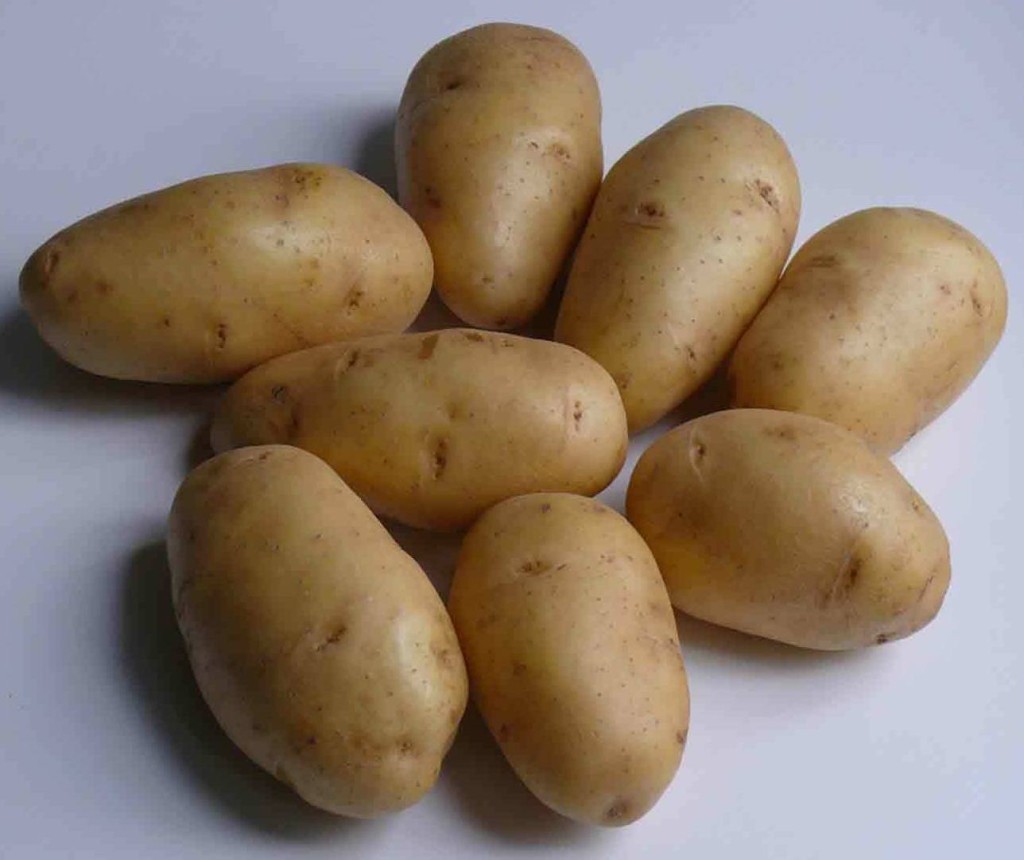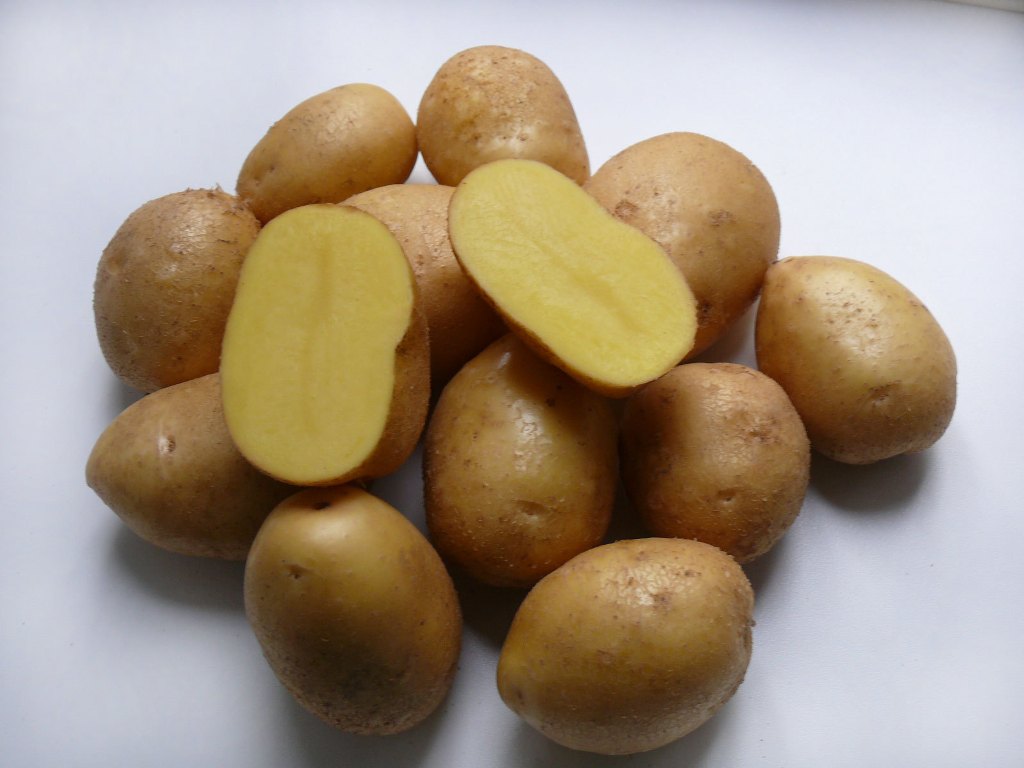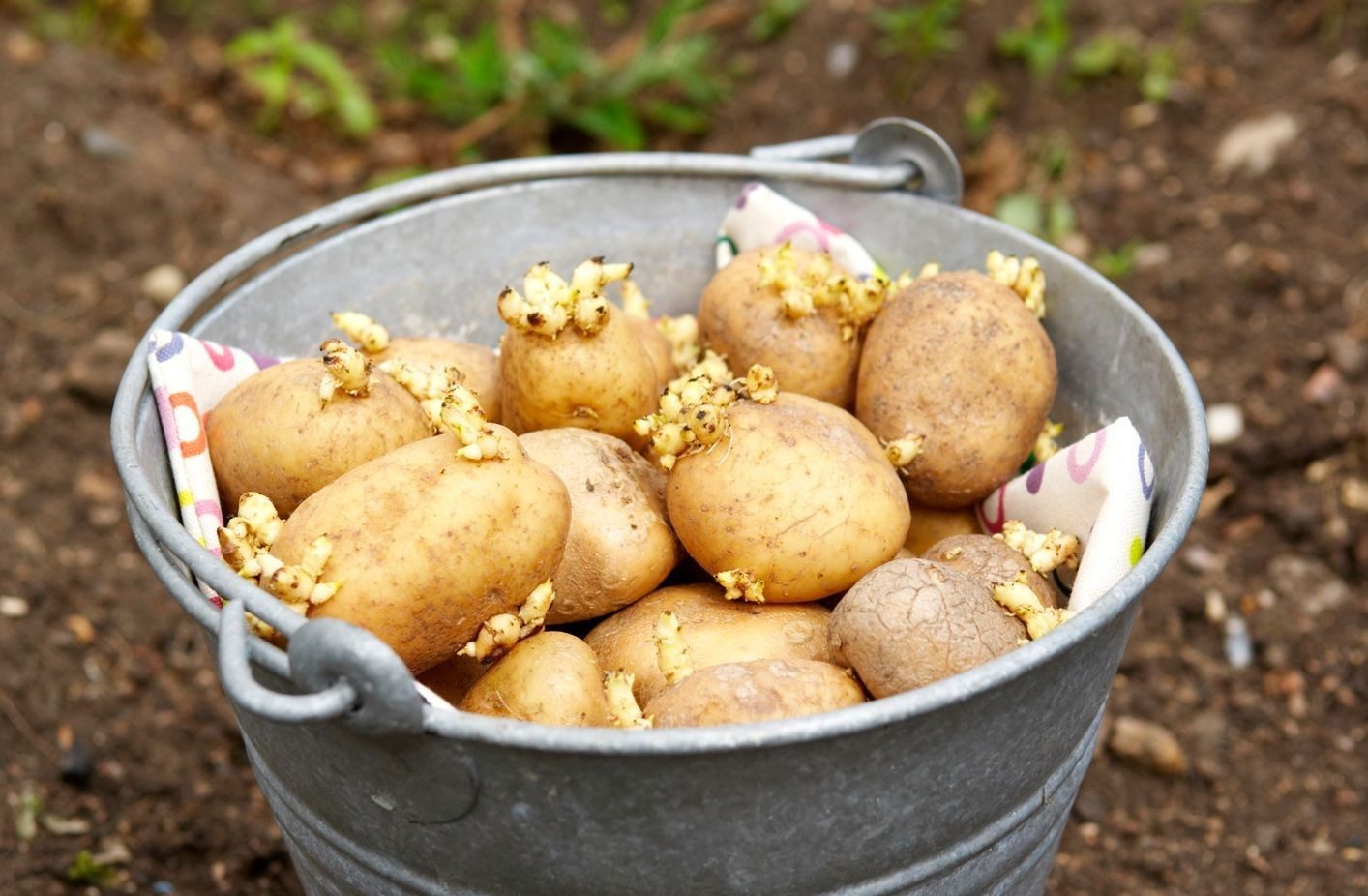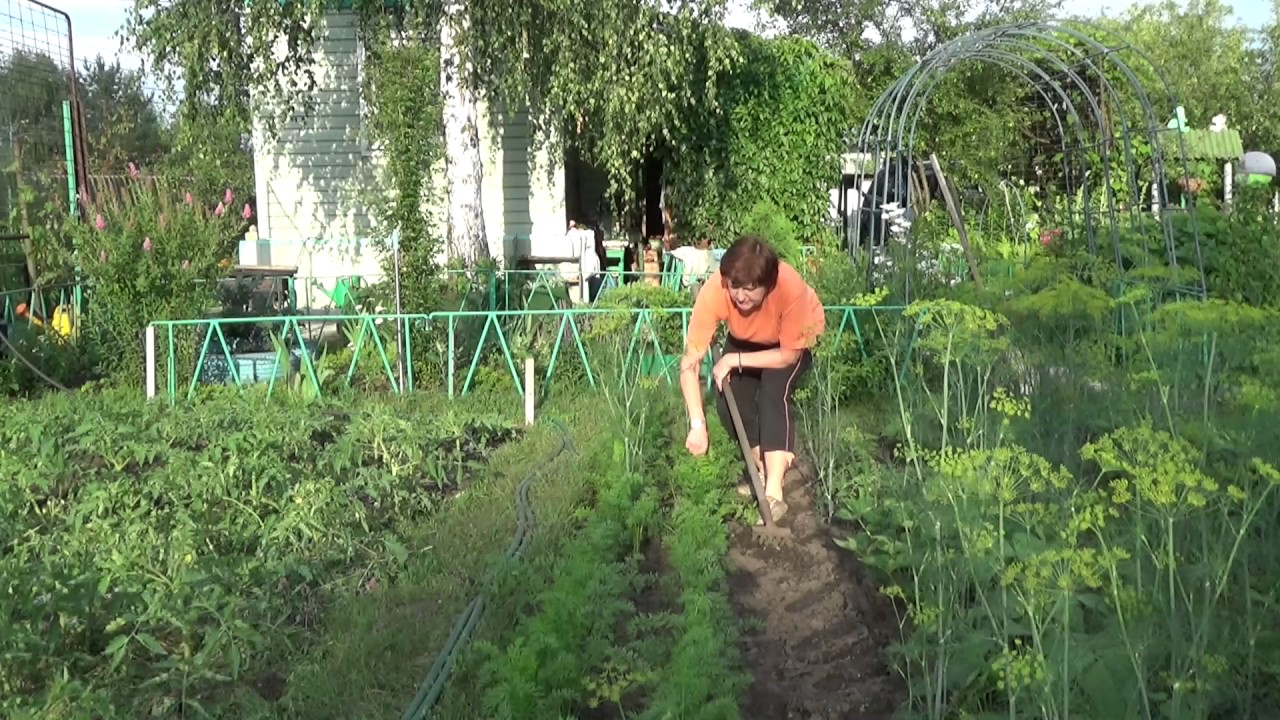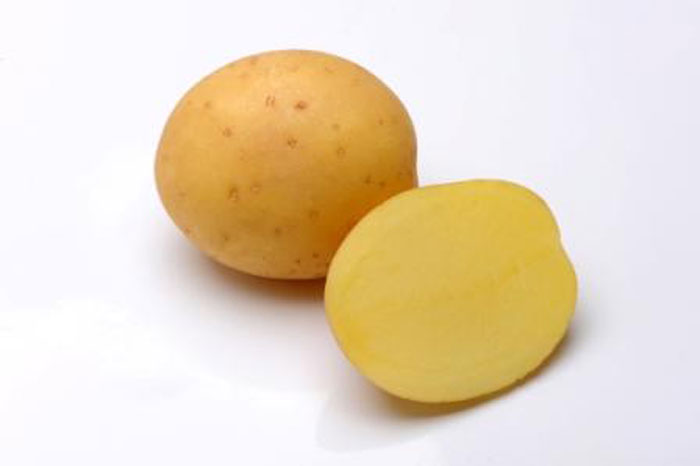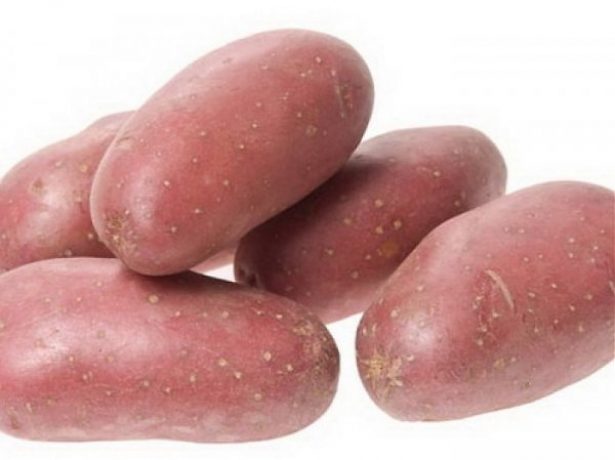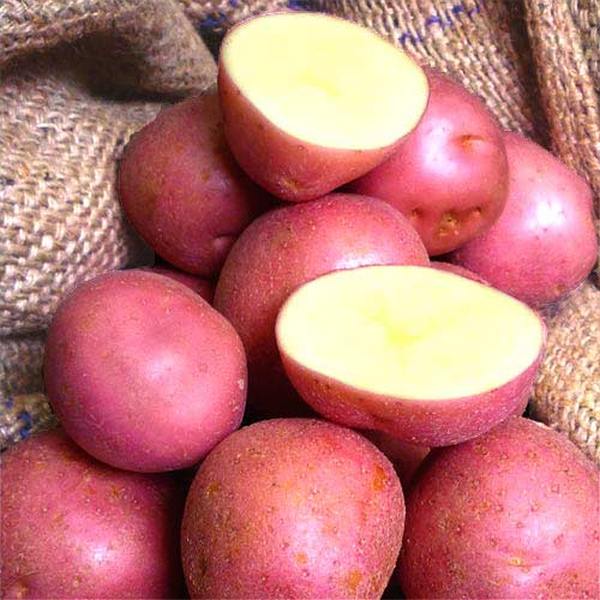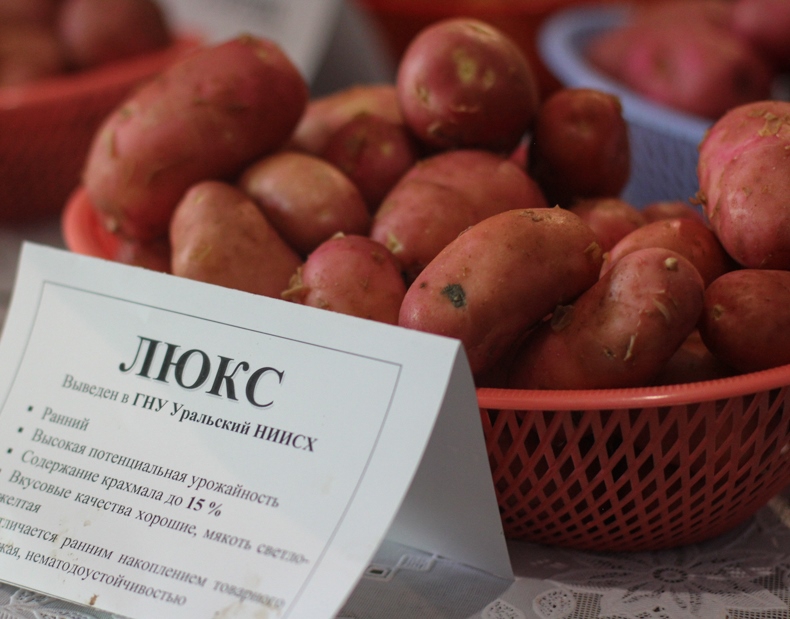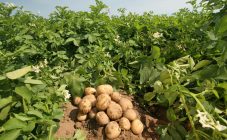Content:
Starchy crumbly tubers at least once a day, but are present on the dining tables of Russians. The potatoes are well stored, which allows them to be added to the diet in winter. But with the arrival of summer, you already want to pamper yourself with young nodules, you can really achieve this only with early and mid-season varieties.
Once at the beginning of summer, harvests could not be obtained in all regions, but the breeders offered the farmers a new variety, which has taken root in all regions of the country, due to its unpretentiousness to the soil and adaptation to the harsh climate. Seed potatoes Nevsky - a derivative of the varieties Candidate and Veselovskaya, bred by the North-Western Research Institute back in the late 70s of the last century. Although the mid-early variety was added to the State Register 6 years later.
Variety characteristics
If farmers are looking for varietal material for growing that meets most of the requirements, it is worth paying attention to the description of the Nevsky seed potato variety.
Features of the variety
| Indicators | Description |
|---|---|
| Tops | Erect, compact, low. It has a large number of weakly branching stems. Medium-sized dark green leaves with a glossy surface that reflects sunlight well, which allows the shrub to retain moisture. Produces lush white flowers that fade quickly |
| Tubers | Oval-rounded with a blunt apex, even, not rough. The skin and flesh are whitish yellow. Fruits that do not darken when cut contain up to 15% starch. During heat treatment they do not crumble, but they are not recommended in mashed potatoes and frying - only for first courses and salads |
| Maturation period | 70 to 90 days |
| Yield | The bush gives up to 15 tubers with an average weight of 90 to 130 g, which allows taking about 400-500 centners from 1 hectare |
| Storage | Suitable for winter storage, keeping quality is high and is about 95% |
In addition to the features listed in the table, the following characteristics of the variety should also be described:
- resistance to late blight, rhizoctonia, scab, black leg, cancer;
- tolerates droughts and waterlogging equally well;
- suitable for growing in northern regions, but does not like cold soils.
Gustatory characteristics make the Nevsky potato variety popular. The tubers are given a high tasting rating that does not change during long-term storage.
Landing features
Even adhering to the general rules for planting potatoes, you can get a good harvest of this variety. But given some features, there is a chance to significantly increase this indicator.
Site selection
You should not rely on the fact that Nevsky is unpretentious to growing conditions. To get a good taste of numerous tubers, it is better to plant potatoes in fertile loam and sandy loam.
Plants are actively developing in open sunny places, in the shade, on the contrary, the yield decreases sharply. So planting along fences, outbuildings and under trees is excluded.
Having chosen a place for a potato plantation, the site is dug up in the fall, having previously introduced fertilizers: a bucket of organic matter, 25 g of superphosphate, 20 g of ammonium nitrate, 15 g of potassium chloride, a glass of wood ash.This will increase the potato yield by at least 2 times.
Tuber preparation
When choosing the Nevsky variety, potato seeds cannot be planted in the ground immediately after they are removed from storage - you need to give time to lie down in the light and look out. The preparation time for tubers directly depends on weather conditions. We will have to wait until the soil warms up enough for planting, and the risk of spring frosts will go away (this period is different for each region).
Usually this procedure is carried out 2 weeks before planting the tubers in the ground. The optimum air temperature in the germination room is 18 degrees Celsius. If the seeds are preheated, the germination of pinkish eyes will accelerate.
Seed fruits are also responsive to various kinds of growth stimulants. Presowing spraying of tubers will accelerate the germination of sprouts and increase the number of fruits on the bush.
Landing scheme
The peculiarity of this variety is that it is better to plant tubers in holes, and not trenches. The holes are prepared in advance, laying dry manure or bird droppings (1 handful) on the bottom, humus, as well as ash (2 tablespoons) and eggshells (crushed).
The depth of the holes should be 20 cm, the distance between them should be half a meter. The row spacings are made spacious - at least 70 cm. This will provide convenience when hilling, which is the main element of plantation care.
Tubers are laid out in the wells whole, sprouts up. You cannot cut the potatoes - this will reduce the immune defense.
Growing rules
The further development of tubers directly depends on the conditions that the gardener will create. The general rules of agricultural technology are applicable to this variety, but it is worth focusing on some points.
Watering
Despite drought resistance, varietal material needs at least a minimum amount of watering. In a rainy summer, you can trust nature, but in the hot season, it is imperative to moisten the soil at the first shoots, during the budding period and after the flowers fall. In this case, the earth should get wet well to a depth of half a meter. For each square meter of the plantation, you need to take up to 50 liters of water.
Top dressing
All crops are fertilizer responsive. As for the Nevsky variety, the food that is put in the holes during planting will be enough for him.
But if the soil is not fertile enough, you can use the following fertilization scheme for the plantation (the components are indicated taking into account the addition of water to the bucket):
- during the first watering of the beds - 1 tbsp. urea and 0.5 liters of mullein infusion;
- period of bud formation - 1 tbsp. sodium sulfate and 3 tbsp. ash;
- during active flowering - 2 tbsp. superphosphate and 1 glass of cow's infusion.
Fertilizers are applied under each bush so that nutrition reaches the root system.
Hilling and loosening
Podging the earth to the bushes is a prerequisite for growing the Nevsky potato variety. This procedure is especially important during the dry season. The land for hilling is taken from the row spacing, raking high bumps.
The first time is spud when the bushes reach a height of 12 cm. A second call is made after 3 weeks. This procedure should be followed by watering.
Before emergence, only soil loosening is carried out. In the future, plowing the land should be after each watering or rain, as well as in the process of removing weeds. If potatoes are grown on heavy soils, then the procedure is carried out more often in order to timely remove the crust formed on the surface.
Wellness procedures
This type of potato is highly resistant to crop diseases. But there is one parasite that does not care about the immunity of the variety - the nematode. It is difficult to detect worms in time, since they act near the roots of the plant.
Therefore, it is easier to prevent an enemy invasion than to deal with its consequences:
- plant only disinfected, undamaged tubers;
- do not grow potatoes in the same place every year;
- to prepare beds for planting in advance, from autumn, carefully digging shovels to a depth and breaking clods of earth;
- weed control is mandatory.
Having found sick bushes on the plantation, you should not try to reanimate them. Better to dig up and completely destroy. Otherwise, the nematode will capture neighboring plants.
Advantages and disadvantages of the variety
It is the instability to the nematode that is considered the main disadvantage of this variety. Among others, sensitivity to cold ground can be distinguished. Gourmets also consider a small amount of starch to be a minus, because of which mashed potatoes are not fluffy enough.
In all other respects, Nevsky potatoes meet the requirements for vegetable crops.
Among the main advantages are the following:
- adapts well to the climatic conditions of the region;
- high productivity even on poorly fertile soils;
- has sufficient immunity to all potato diseases;
- endures the invasion of Colorado beetles;
- suitable for mechanized hilling and harvesting;
- all tubers have an excellent presentation that does not deteriorate during long-term transportation;
- potatoes do not darken during cooking and retain their shape well without falling apart;
- the fruit has a real potato aroma and an indescribably pleasant taste;
- Another important property is that the tubers contain an increased content of vitamin C, which makes the vegetable a valuable product.
Since the Nevsky variety ripens in the first half of summer, in the southern regions it is possible to re-plant potatoes no later than the beginning of July. But in this case, you will have to take care of sheltering the beds from the hot sun with a mat.
The rest of the care is identical to that described above, it will provide a second harvest at the end of September. You should not hesitate with harvesting - rotting of the tubers may begin. As soon as the tops are laid down, this is a signal for the beginning of the harvest season.
